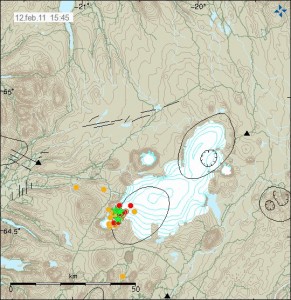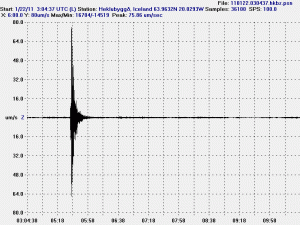In my last blog post I did tell the news about the possibility about a eruption in the Kistufell volcano field. But that field is a part of Bárðarbunga volcano system and has a lot of earthquake activity since the beginning of earthquake recording in Iceland.
In the tonight news on Rúv about this area, Páll Einarsson geologist at University of Iceland says in the news on Rúv that there is a good reason to worry about this area. As it is one of the most active one in Iceland, but it is directly above the mantle plume under Iceland. Páll Einarsson also says in the news on Rúv that before the eruption in the year 1996, that took place in a volcanic ridge now named Gjálp there was a increase in earthquake activity in Kistufell field.
But due to continues earthquake activity there is it hard to know what is exactly going on there. Páll Einarsson also says in the news on Rúv that it is a problem that this area of Iceland lacks the proper coverage with seismometers. But they are few in this area and that makes it harder to detect the depth and the location of the earthquake that take place in this area of Iceland.
After the Eyjafjallajökull volcano eruption in the year 2010. It seems that geologist in Iceland take earthquake swarms more seriusly then they did before. As they did learn from Eyjafjallajökull volcano eruption that not all volcano start with few earthquakes just before they erupt, as is common with few volcanoes in Iceland.
The news from Rúv on this matter. Use Google Translate to understand.
Full ástæða til að hafa varann á (Rúv.is)


